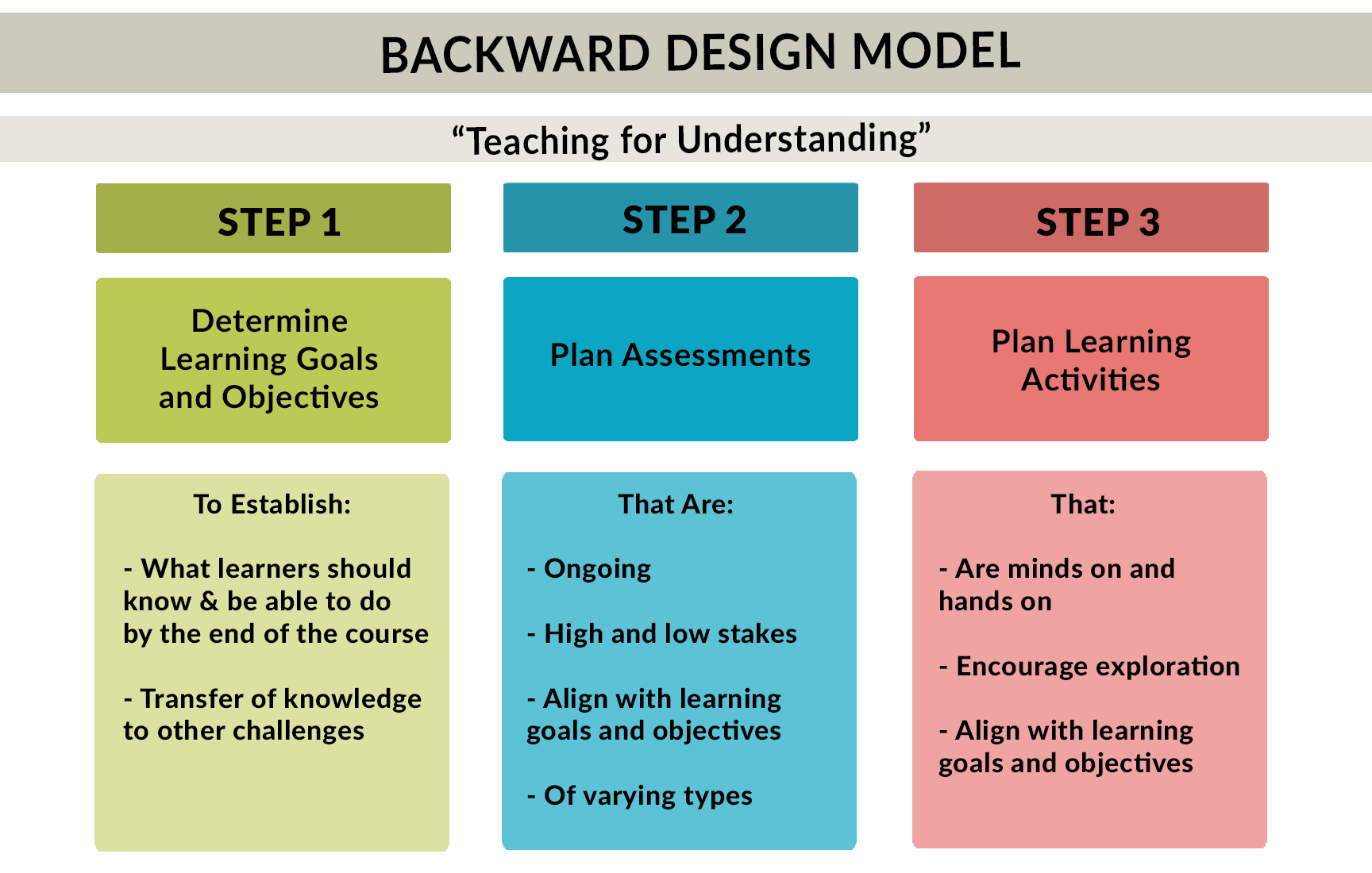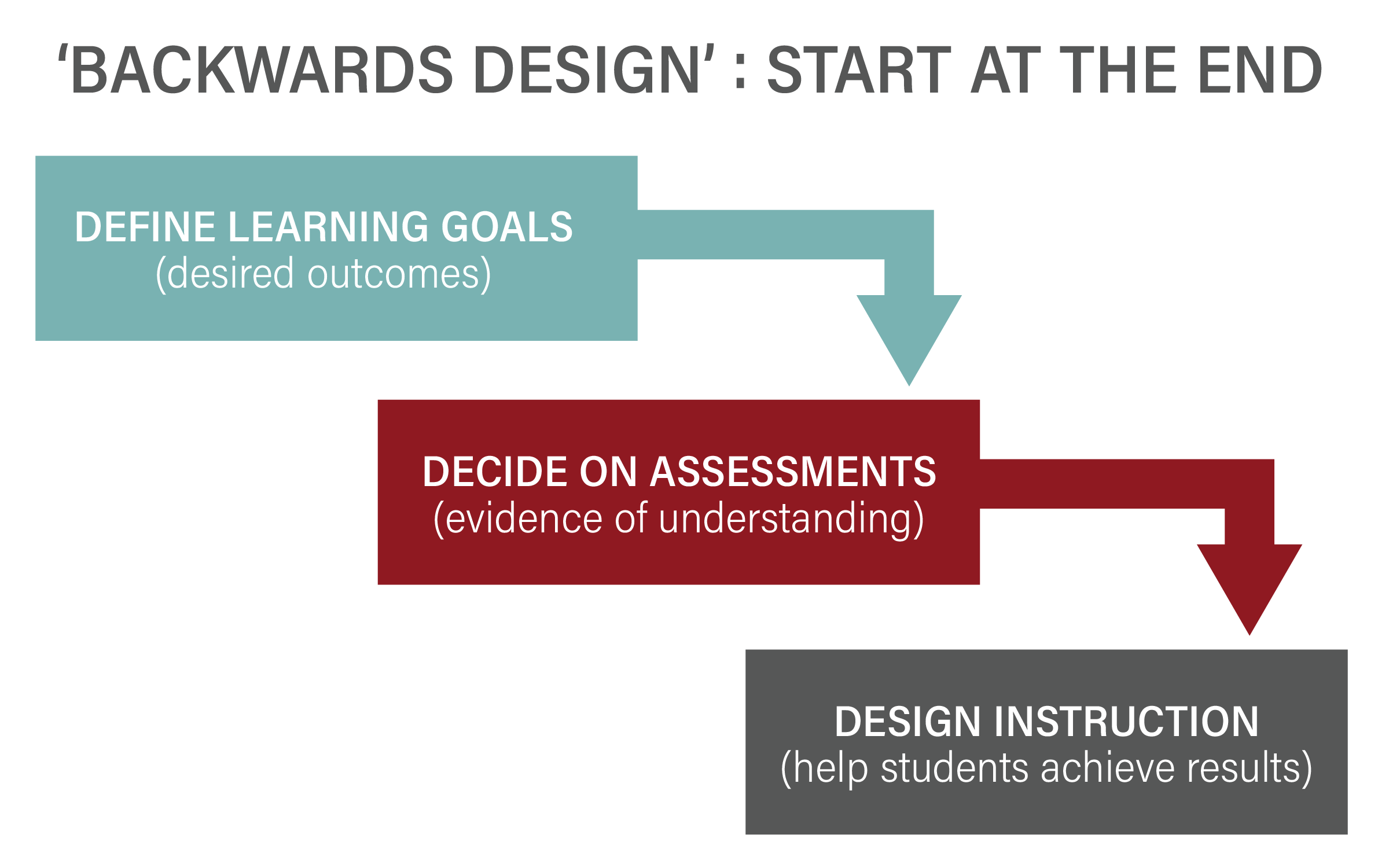Table Of Content

With intended learning outcomes in hand, the next step of the backward design process is to create assessments that appropriately measure students’ attainment of intended learning outcomes. Various kinds of assessments can fill this role, as long as the assessment task is closely aligned with the action described in the ILO. (26 PD Hours) In this course, participants will learn the importance of and how to align your instructional strategies and activities with your learning objectives and plans for assessments. Once you have written a student-centered learning objective, and determined how you will assess your students, you are ready to plan the instructional strategies and activities you will implement.
Traditional Lesson Design
This is the same philosophy that follows many standardized tests in public schools around the country. Public school teachers will often “teach the test” by focusing primarily on what will be on federal or state standardized tests instead of other content or modules in textbooks. Since you already know what your tests will be about, this should be relatively easy. To help solve this problem, curriculum developers attempt to match the contents of the local or state curriculum, which are based on the standards, to the test or tests using backward design. Districts often begin with the test items that were released as a starting point in the process. We recognise the Ongoing Custodians of the lands and waterways where we work and live.
How Can We Align Learning Objectives, Instructional Strategies, and Assessments?
While PBL and Backward Design both stress the importance of real-world applications, they differ in structure. PBL is generally more open-ended and may not align neatly with specific learning objectives. When students are aware of the learning objectives from the start, as they are in a Backward Design framework, they are likely to be more motivated to achieve those objectives. Knowing what the end goal is, just like knowing what the treasure is at the end of a hunt, can make the educational journey more motivating and fulfilling.
Some Questions About Your Lessons
In defining specific course goals, many teachers make use of A Taxonomy for Learning, Teaching and Assessing (Anderson, Krathwohl, 2001) as a guide. This taxonomy describes cognitive learning processes with respect to increasing levels of abstraction and complexity, from basic to advanced, around which goals can be organized. The first step to producing quality online, blended or face-t0-face courses is quality course design. The most common approach to course design is to begin with a consideration of the most suitable methodologies for teaching content. In other words, the focus is typically on how the content will be taught, rather than on what is to be taught.
In traditional curriculum planning, a list of content that will be taught is created and/or selected.[4] In backward design, the educator starts with goals, creates or plans out assessments and finally makes lesson plans. Supporters of backward design liken the process to using a "road map".[5] In this case, the destination is chosen first and then the road map is used to plan the trip to the desired destination. In contrast, in traditional curriculum planning there is no formal destination identified before the journey begins.
Carmen Common Sense: Best Practices
Butler to launch two-year college in fall 2025 - The Butler Collegian
Butler to launch two-year college in fall 2025.
Posted: Wed, 15 Nov 2023 08:00:00 GMT [source]
Only when one knows exactly what one wants students to learn should the focus turn toward consideration of the best methods for teaching the content, and meeting those learning goals. This lesson planning template will walk teachers through the three steps of the backwards design process in order to plan an effective lesson. It will begin with writing a clear content objective, then move onto creating an effective assessment that measures student mastery of the content objective, and finish with choosing appropriate instructional activities. Normally, or with traditional lesson planning, you focus on standards and learning objectives. Design your tests and assessments first, then figure out your lesson plans, then teach your students.
This refers to a degree of accuracy, the number of correct responses, or perhaps a teacher-imposed time limit. Now once we’ve done those two steps, lets compare them side by side to see if they match the content that we are bringing in. If you feel that the content in the chapter doesn’t reflect the outcomes, then cut it out and put it in a separate document so that you have it later on. Backwards design is simply starting from the outcome (or transformation) for your students & building the modules/chapters/sections with those outcomes in mind. The most important decision for a curriculum committee to make regarding which design to use should be based on what is most appropriate for the school or district.
Center for Teaching

By focusing on the end goals you want to achieve, then emphasizing assessment types and content, you ensure that your lessons will always teach students what they need to know to pass tests. Basically, focus on identifying the desired results, which should be student-centered. Then your course design will have learning experiences tailored toward those learning outcomes. When done well, backward design lesson plans often result in better test or assessment outcomes, which can be advantageous both for professional educators and for online teachers of all other types, like small business owners. As the quote below highlights, teaching is not just about engaging students in the content. It is also about ensuring students have the resources necessary to understand.
Like any journey, knowing where you've come from can help you understand where you're going. And in the world of Backward Design, it's always about reaching meaningful destinations. This teaching guide is licensed under a Creative Commons Attribution-NonCommercial 4.0 International License.
Instead of starting with what educators want to do, it starts with what students need to learn. This learner-centered focus makes it a powerful approach for modern education, where student engagement and outcomes are increasingly emphasized. Educational technology experts like Dr. Ruben Puentedura, known for the SAMR model, suggest that technology can play a powerful role in implementing Backward Design. Whether it's digital assessments or interactive activities, technology can offer innovative ways to achieve your learning objectives. This method is rooted in the constructivist theories of educators like Jean Piaget. Like Backward Design, Inquiry-Based Learning encourages higher-order thinking skills.
Learning outcomes and/or objectives should target complex skills and knowledge, by implementing Bloom's terminology into a learning outcome instructors can help students understand what they need to do in order to meet the desired results. An important part of aligning content to your assignments and assessments is limiting or eliminating material that is redundant or unnecessary. In other words, if it does not align to a learning outcome, you probably do not need to include that content.









